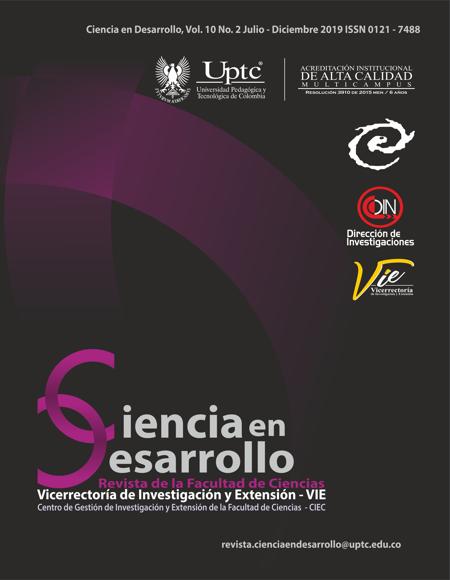Green preparation of methyl cinnamate and evaluation of its antifungal activity as a potential wood preservative

Abstract
Wood constitutes a material susceptible to fungal degradation, presenting frequent and aggressive deterioration when it is put into service. Although over the years compounds have been developed for their protection with various methods of impregnation, many of them present strong environmental questions. The present work focuses on obtaining a preservative with potential antifungal activity for wood through a procedure of low environmental impact. The synthesis of methyl cinnamate (CiM) from cinnamic acid and methanol was carried out by catalysis with acids of Preyssler structure, with a yield of 49% and a selectivity of 100%. Subsequently, the antifungal action of the compound against Gloeophyllum sepiarium (Wulf.: Fr.) P. Karst, fungus causing brown rot was evaluated in-vitro. To do this, the growth of the fungus was comparatively analyzed on a control agarized culture medium and in the presence of CiM. The CiM demonstrated antifungal effect from 2000 ppm, though it was dependent on the incubation temperature. Further research is needed on wood to confirm its potential as a green preservative.
Keywords
antifungal, methyl cinamate, preservative, green chemistry
References
[1] S. Monteoliva. La madera: propiedades y productos forestales. Apunte de Cátedra de Xilotecnología, Facultad de Ciencias Agrarias y Forestales – UNLP, 2009, 13 pp.
[2] M.C. Murguía, “Desarrollo de nuevos productos para la preservación de maderas”, en Actas de III Congreso Iberoamericano de Protección de la Madera (CIPROMAD). Concepción, Chile, 2012, 10 pp.
[3] M. Murace, E. Spavento, G.D. Keil, M. Saparrat, “Pudrición castaña: efectos sobre las propiedades de resistencia mecánica de la madera“, Revista de Ciencias Forestales – Quebracho, vol. 18 (1,2), 2010, pp.37-46.
[4] G.D. Keil, Biodegradación y Preservación de la Madera: Sustancias Preservantes. Curso de Actualización para Graduados, Universidad Nacional del Comahue. 2004, 9 pp.
[5] E. Murillo, A. Viña, I.L. Correa,“Actividad antifúngica y composición química del aceite esencial de doce variedades de Ocimum sp. cultivadas en Ibague – Colombia”, Información Tecnológica, vol. 13 N° 1, 2002.
[6] I. Bin Jantan, B.A.K. Moharam, J. Santhanam, J.A. Jamal, “Correlation Between Chemical Composition and Antifungal Activity of the Essential Oils of Eight Cinnamomum Species“, Pharmaceutical Biology, Vol. 46, No. 6, 2008, pp. 406–412.
[7] J-O. Kong, S-M. Lee, Y-S. Moon, S-G. Lee, Y-J. Ahn, “Nematicidal Activity of Cassia and Cinnamon Oil Compounds and Related Compounds toward Bursaphelenchus xylophilus (Nematoda: Parasitaphelenchidae)”, Journal of Nematology, vol 39(1), 2007, pp.31–36.
[8] T. Sawahata, S. Shimano, M. Suzuki, “Tricholoma matsutake 1-ocen-3-ol and methyl cinnamate repel mycophagous Proisotoma minuta (Collembola: Insecta)”, Mycorrhiza, vol 18, 2008, pp. 111–114.
[9] M.E. Pérez, D. Ruiz, D.;G. Pasquale, F. Barberis, M.I. Schneider, G.P. Romanelli, J.C. Autino, “Preparación de cinamatos de alquilo en condiciones de bajo impacto ambiental”,Investigación Joven, vol. 2 (1), 2015, pp. 33.
[10] G. P. Romanelli, Curso de Química Verde: retos para un desarrollo sostenible, Universidad del Cauca, Popayán, Colombia, 2013.
[11] J. Ruan, X. Li, O. Saidi, J. Xiao, “Oxygen and Base-Free Oxidative Heck Reactions of Arylboronic Acids with Olefins”, J. Am. Chem. Soc., vol. 130, 2008, 2424-2425.
[12] F.F. Bamoharram, M.M. Heravi, M. Roshani, M. Jahangir, A. Gharib, “Preyssler catalyst, [NaP5W30O110]14-: a green, efficient and reusable catalyst for esterification of salicylic acid with aliphatic and benzylic alcohols“, Appl. Catal. A Gen., vol. 302, 2006, pp. 42–47.
[13] M.C.N. Saparrat, M.J. Martínez, M.N. Cabello, A.M. Arambarri, “Screening for ligninolytic enzimes in autochthonous fungal strain from Argentine isolated from different substrata“, Revista Iberoamericana de Micología, vol. 19, 2002, pp. 181-185.
[14] M.I. Troncozo, R.P. Gómez, A.M. Arambarri, P.A. Balatti, A.M.M. Bucsinszky, M.C.N. Saparrat, “Growth and oxidative enzymatic activity of in-vitro cultures of Ciliochorella buxifolia”, Mycoscience, vol. 56, 2015, pp. 58-65.
[15] J.A. Di Rienzo, M. Balzarini, L. González, F. Casanoves, M.M. Tablada, C.W. Robledo, “Software estadístico InfoStat”, Universidad Nacional de Córdoba (FCA-UNC), 2016.
[16] M.E. Pérez, D. Ruiz, G.P. Romanelli, M. I. Schneider, J.C. Autino, “Bioactividad de derivados naturales del ácido cinámico”, XIX Simposio Nacional de Química Orgánica, 2013. Diponible en:
http://www.conicet.gov.ar/new_scp/detalle.php?keywords=&id=05420&inst=yes&congresos=yes&detalles=yes&congr_id=2195821. Último acceso: mayo 2018.
[17] D. Ruiz, G. Romanelli, P. Vázquez, J. Autino. J., “Catálisis con heteropoliácidos con estructura de Preyssler. Aplicación en la síntesis de fenilpropanoides“, VI Simposio Colombiano de Catálisis. Medellín, Colombia, 2009, 5 pp.
[18] North American Plant Protection Organization (NAPPO), “Review of heat treatment of wood and wood packaging“, NAPPO Science and Technology Documents, 2014, pp. 7-8.
[19] R.A. Zabel, J.J. Morrell, “Wood Microbiology: Decay and Its Prevention“, Academic Press, Inc. USA, 1992, pp. 106.
[20] G. Alfredsen, H. Solheim, K.M. Jenssen, “Evaluation of decay fungi in Norwegian buildings“, International Research Group on Wood Protection. India. IRG/WP 05-10562, 2005, 12 pp.
[21] T. Stienen, O. Schmidt, T. Huckfeldt, “Wood decay by indoor basidiomycetes at different moisture and temperature“, Holzforschung, vol. 68(1), 2014, pp. 9-15.
[22] E. Haug, N. Raffaeli, G. Romanelli, D. Ruiz, M. Saparrat, G. Keil, “Síntesis de Bajo Impacto Ambiental de un Preservante de Maderas a partir de la Química Verde“, V Congreso Iberoamericano de Protección de la Madera. Colonia de Sacramento, Uruguay, 2016, 9 pp.
[23] P. Jawallapersand, S.S. Mashele, L. Kovacˇicˇ, J. Stojan, R. Komel, S.B. Pakala, N. Krasˇevec, K. Syed, “Cytochrome P450 Monooxygenase CYP53 Family in Fungi: Comparative Structural and Evolutionary Analysis and Its Role as a Common Alternative Anti-Fungal Drug Target“, PLoS ONE, vol. 9(9), 2014, e107209, 15 pp.
[24] J. Zhang, G.N. Presley, K.E. Hammel, J-S. Ryu, J.R. Menke, M. Figueroa, D. Hu, G. Orr, J.S. Schilling, “Localizing gene regulation reveals a staggered wood decay mechanism for the brown rot fungus Postia placenta“, Proceedings of the National Academy of Sciences, vol. 113(39), 2016, pp. 10968-10973.
[25] F. Kamada, S. Abe, N. Hiratsuka, H. Wariishi, H. Tanaka, “Mineralization of aromatic compounds by brown-rot basidiomycetes–mechanisms involved in initial attack on the aromatic ring“, Microbiology, vol. 148(6), 2002, pp. 1939-1946.